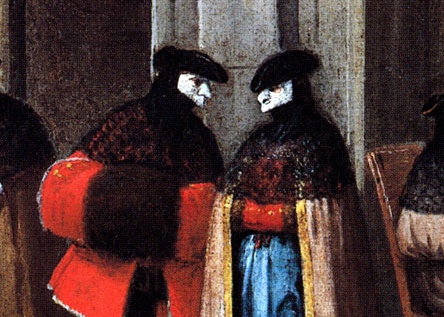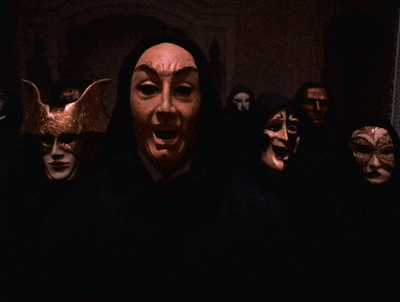Carnival in Venice14:43 Apr 02 2022
Times Read: 254
Carnevale was first celebrated in Venice in 1094 and has been officially sanctioned in that city since 1296. During the Middle Ages and the Renaissance Carnevale celebrations were popular throughout Europe.

The Venice Carnival is the the most well- known and one of the oldest festivals annually celebrated in the world. The word ‘carnival’ or ‘carnivale’ in Italian is believed to be derived from the Latin words ‘carnem levare’ or ‘carnelevarium’ which mean to take away or remove meat! Another meaning for the world carnival could be also from the Latin words ‘carne vale’ or ‘farewell to meat’. That phrase perfectly describes a time devoted to preparing for Lent, the Christian tradition of the forty days period before Easter, during which abstinence from meat is practiced. The Venice Carnival takes place each year in February. It begins around two weeks before Ash Wednesday and ends on Shrove Tuesday, also known as Fat Tuesday (Mardi Gras in French or Martedi Grasso in Italian).

The subversive nature of the festival is reflected in the many laws created over the centuries in Italy attempting to restrict celebrations and often banning the wearing of masks.
Masks have always been a central feature of the Venetian carnival; traditionally people were allowed to wear them between the festival of Santo Stefano (St. Stephen's Day, December 26) at the start of the carnival season and midnight of Shrove Tuesday. As masks were also allowed during Ascension and from October 5 to Christmas, people could spend a large proportion of the year in disguise.

Mask makers (mascareri) enjoyed a special position in society, with their own laws and their own guild. Today for two weeks public areas around Venice become the showcase for actors, acrobats and musicians with residents and visitors alike wearing elaborate masks and elegant costumes. Venetian masks can be made of leather, porcelain or using the original glass technique. The original masks were rather simple in design, decoration, and often had a symbolic and practical function. Nowadays, most Italian masks are made with the application of gesso and gold leaf and are hand-painted using natural feathers and gems to decorate.

The Bauta (sometimes referred as baùtta) is a mask, today often heavily gilded though originally simple stark white, which is designed to comfortably cover the entire face; this traditional grotesque piece of art was characterized by the inclusion of an over-prominent nose, a thick supraorbital ridge, a projecting "chin line", and no mouth. The mask's beak-like chin is designed to enable the wearer to talk, eat, and drink without having to remove it, thereby preserving the wearer's anonymity. The bauta was often accompanied by a red or black cape and a tricorn.
In the 18th century, together with a black circular or semicircular clasped cape called a tabarro (and zendale hood) the bauta had become a standardized society mask and disguise regulated by the Venetian government. It was obligatory to wear it at certain political decision-making events when all citizens were required to act anonymously as peers. Only citizens (i.e., men) had the right to use the bauta. Its role was similar to the anonymizing processes invented to guarantee general, direct, free, equal and secret ballots in modern democracies. Also, the bearing of weapons along with the mask was specifically prohibited by law and enforceable by the Venetian police.
Venetian masks feature prominently in the movie Eyes Wide Shut.

Masquerade balls were a feature of the Carnival season in the 15th century, and involved increasingly elaborate allegorical Royal Entries, pageants, and triumphal processions celebrating marriages and other dynastic events of late medieval court life.
Masquerade balls were extended into costumed public festivities in Italy during the 16th century Renaissance (Italian maschera). They were generally elaborate dances held for members of the upper classes, and were particularly popular in Venice. They have been associated with the tradition of the Venetian Carnival.

Masquerade masks had many uses including hiding one's identity, and using different colour to express one's freedom of speech and voice one's emotions and opinions without judgement. There were two types of base masquerade masks; black masks and white masks. Designs and patterns were created over the base that was chosen. The main types of masks included masks with a stick (which one could hold to keep the mask in front of their face), the head mask, the full-face mask, and the half face mask. Masquerade masks have been used in classics such as The Phantom of the Opera.












COMMENTS
-